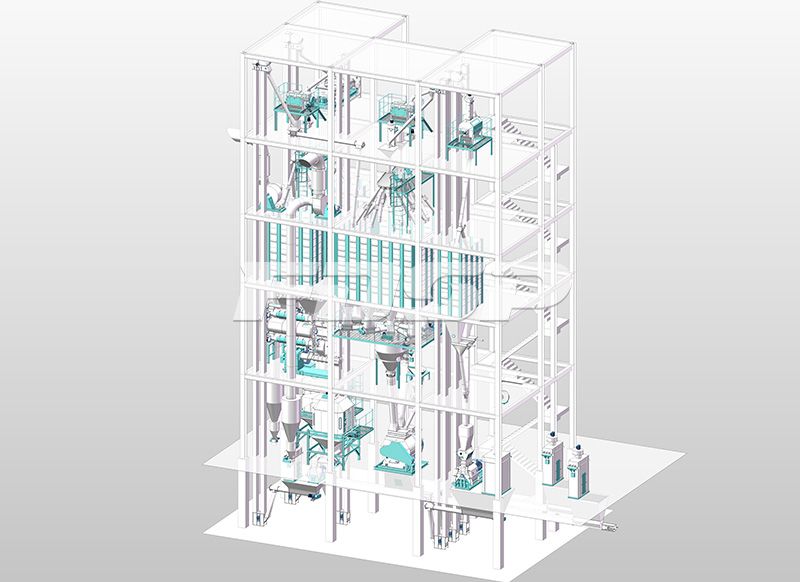Moisture control of piglet pellet during production
2021-05-18

1. The influence of the moisture of suckling pig pellets on mechanical wear and production efficiency
The lower the moisture of the pellets, the more severe the mechanical wear and the lower the production efficiency. The production efficiency of pellets with moisture content of 11%~13% is fast, and the mechanical abrasion is light.
2. Methods to increase the moisture of pellets during feed processing
2.1 Moisture control during raw material crushing
By comparing and analyzing the results of using pulverizer screens with different apertures, it is found that the moisture loss of raw materials after pulverization increases significantly with the reduction of the raw material pulverized particle size. As the moisture content of the raw material increases, the crushing efficiency will decrease and the energy consumption will increase.
2.2 Moisture control during feed mixing
The water loss during the feed mixing process is very small and can be ignored. When the moisture content of the mixed powder is low, consider spraying atomized water when the materials are mixed. However, there are many problems in adding water to the mixer that must be paid attention to: ① The water added to the mixer cannot be directly used as tap water, it needs special treatment or the addition of an anti-mold agent. ②Configure the nozzles of suitable quantity and size, adjust the position and speed of the nozzles to ensure uniform spraying. ③Clean up the mixer and the granulating silo after the end of production every day to avoid residual materials on the inner wall of the mixer and the granulating silo.
2.3 Moisture control in the quenching and tempering process
Steam conditioning is a key process in pellet feed processing. The conditioning effect directly affects the quality of pellets and the moisture content of the finished feed. Steam quality and conditioning time are two important factors that affect the conditioning effect. In the production process, you can adjust or close the trap and use low-pressure steam to increase the conditioning time of the material in the conditioner, so that the material and the steam are fully mixed, so that the material can fully absorb the moisture in the steam, thereby increasing the moisture of the product.
2.4 Choose a suitable pelletizing ring die
The aperture and compression ratio of the pellet mill's ring die are the main factors affecting the pellet mill's productivity, and it is also one of the factors affecting the moisture of the pellet feed product. A ring die with a small aperture, because of its small particle diameter, the air volume of the cooler can easily penetrate the feed pellets. Therefore, when cooling takes away more water, the feed product moisture will be lower. Conversely, the material ring die with a large aperture has a larger particle diameter, and the cold air is not easy to penetrate the particles, so less water is taken away during cooling, and the water content of the feed product will increase. For the ring die with relatively large compression, during the granulation process, the friction resistance is large, and the material is not easy to pass through the aperture. During the extrusion granulation, the friction temperature is high, the water loss is large, and the moisture content of the feed pellets will be reduced. Generally, suckling pig feeds use ring molds with relatively small apertures, so choosing a ring die with a low compression ratio is beneficial to improve the quality and moisture content of the pellets.